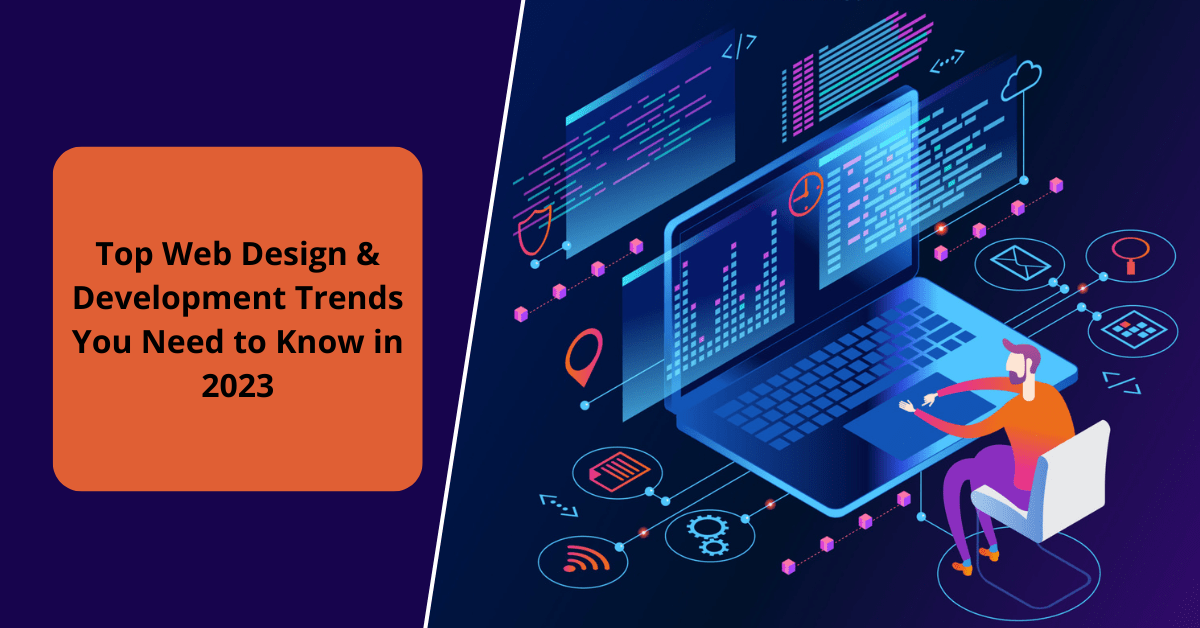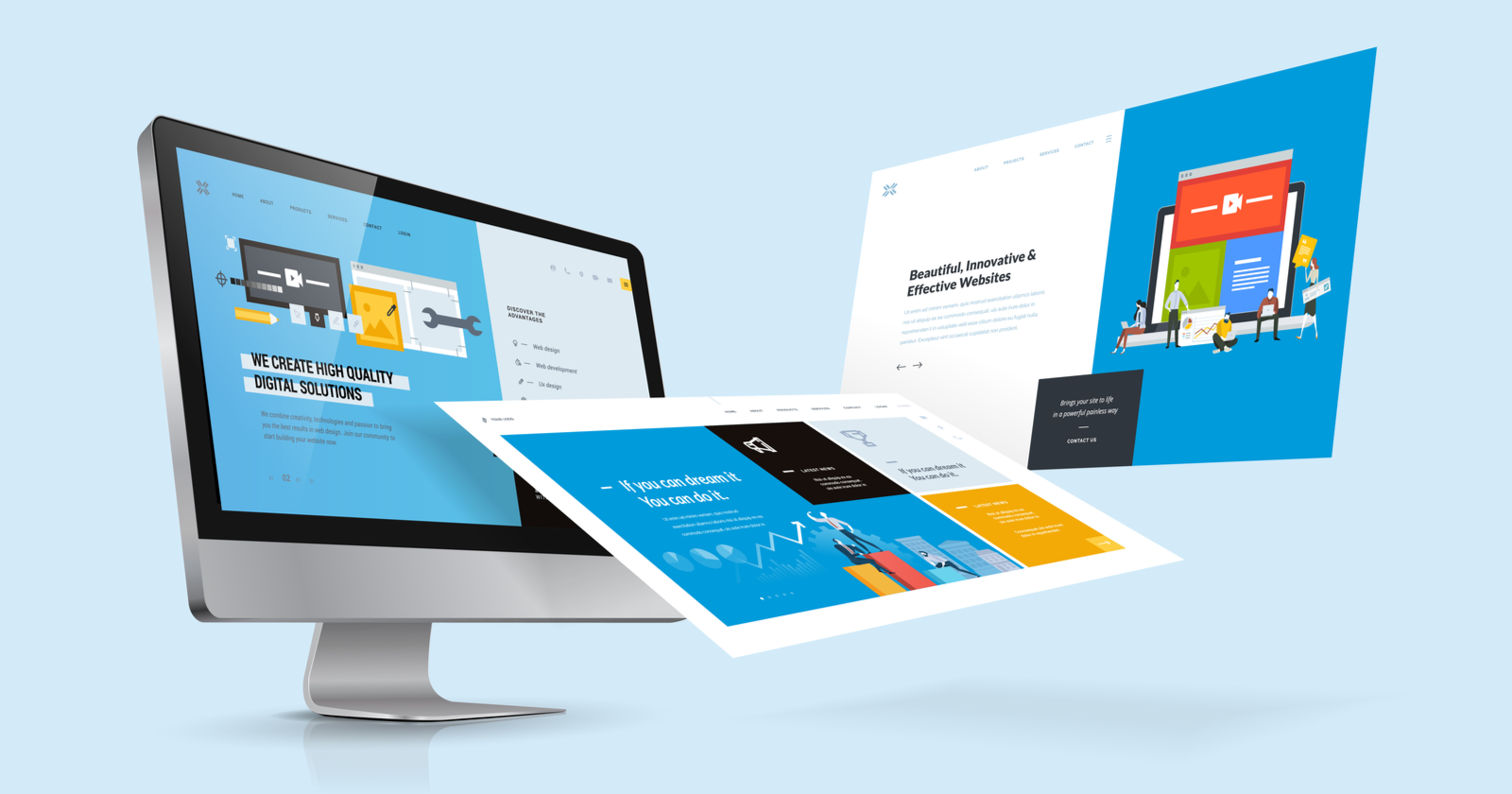Checking Out the Different Kinds Of Web Layout and Their Distinct Benefits
The landscape of Web style incorporates a selection of designs, each offering unique benefits that deal with various user requirements. Flat and minimalist styles stress clarity, while responsive and worldly designs boost convenience across gadgets. Typography-driven and illustratory methods aim to boost interaction and emotional resonance. Recognizing these varied types can significantly influence customer experience and brand assumption. What lies below the surface of these layout selections?
Minimal Website Design

Minimal Web design commonly incorporates a minimal color palette and uncomplicated typography, which not just improves appearances yet also strengthens brand name identification. The decreased complexity can bring about much faster packing times, further boosting individual fulfillment. Furthermore, by reducing visual clutter, customers can engage with material much more properly, causing enhanced understanding and retention. Generally, minimal Web design cultivates a seamless user experience, making it a prominent selection for brand names aiming to communicate clarity and professionalism and trust in their on-line visibility.
Receptive Web Layout
Receptive Web design has become important in today's electronic landscape, making certain mobile compatibility for individuals across various tools. This method significantly improves individual experience by giving seamless navigating and availability, regardless of display size. As even more people access the Web on mobile phones and tablets, the importance of receptive layout proceeds to expand.

Mobile Compatibility Value
As mobile gadget use continues to climb, making sure internet sites work with different screen sizes has become necessary for efficient interaction and engagement. Mobile compatibility, commonly accomplished via receptive website design, permits sites to adjust seamlessly to smart devices, tablets, and other gadgets. This adaptability not only gets to a broader audience but additionally enhances brand credibility. An internet site that functions well on smart phones reflects professionalism and trust and focus to customer requirements. In enhancement, internet search engine prioritize mobile-friendly sites in their positions, making compatibility a crucial variable for online visibility. By investing in mobile compatibility, services can boost their digital visibility and cater to the growing number of individuals who access info on the move. Focusing on mobile-responsive design is crucial in today's digital landscape.
Improved Individual Experience

Apartment Design
Level design is a minimalist method to Web design that highlights simplicity and clarity. By removing three-dimensional components such as gradients, shadows, and textures, level design produces a visually appealing individual interface that prioritizes content and capability. This design promotes an instinctive navigating experience, as individuals can rapidly determine crucial features and actions without disturbance.
One of the main advantages of level layout is its responsiveness across different gadgets and screen sizes. Its uncomplicated layouts and tidy lines adjust flawlessly, making certain a regular experience for individuals on mobile, tablet, or desktop platforms. Furthermore, flat layout typically incorporates vibrant colors and typography, enhancing aesthetic influence and brand recognition.
Additionally, the simpleness integral in level style leads to much faster filling times, which contributes favorably to customer satisfaction - web design. Overall, flat style remains a prominent option for contemporary Web advancement, lining up with modern visual choices while delivering superb use
Product Layout
Product Layout stands for a design language established by Google that focuses on creating a instinctive and cohesive individual experience across digital platforms. This strategy highlights the use of grid-based formats, receptive animations, and deepness effects such as lighting and darkness, which help to produce a feeling of power structure and spatial connections. By imitating the real world, Material Layout permits individuals to connect with digital user interfaces in a much more all-natural and appealing way.
One of the key advantages of Product Style is its adaptability across various devices and screen sizes, guaranteeing a constant experience for individuals. Furthermore, it advertises a clear visual language that improves functionality, making it easier for users to navigate intricate applications. The consolidation of lively colors and strong typography additionally plays an important duty in accentuating essential components, consequently enhancing general customer interaction - web design. Material Style has actually become a prominent choice amongst developers seeking to create visually appealing and useful sites.
Typography-Driven Style
Typography-Driven Style concentrates on the critical use type to enhance the visual and useful facets of a website. This style method focuses on typefaces, font sizes, spacing, and power structure to create visual rate of interest and guide customer experience. By very carefully selecting typography, developers can convey brand identification and stimulate emotions, making the content extra available and engaging.
Reliable typography improves readability and usability, ensuring that customers can easily soak up and navigate the website info. The appropriate mix of kind can also develop a clear visual power structure, enabling users to quickly recognize crucial messages and contacts us to action.
A typography-driven strategy can be adjusted to numerous devices, making certain uniformity throughout platforms. This flexibility is essential in today's multi-device landscape, where customer experience is paramount. Inevitably, Typography-Driven Style serves not just as an artistic choice however also as a functional component that considerably impacts an internet site's efficiency.
Illustrative Web Style
Illustrative website design employs aesthetic storytelling techniques that can substantially boost customer interaction. By incorporating special images, websites can produce an unforgettable brand name identity that reverberates with their target market. This strategy not only astounds visitors yet likewise interacts messages in an aesthetically compelling way.
Visual Narration Methods
A plethora of Web designers use aesthetic narration methods to develop appealing and immersive user experiences. This approach incorporates format, typography, and images to tell a tale that reverberates with users on an emotional degree. By integrating engaging visuals, developers can successfully share messages and stimulate feelings, leading site visitors via a brand name's journey. Infographics, computer animations, and interactive aspects offer to boost stories, making complicated details a lot more accessible and unforgettable. Furthermore, visual narration can develop a cohesive brand identity, as constant imagery and styles strengthen core worths and messages. Inevitably, this method not only mesmerizes individuals yet likewise cultivates a deeper link with the web content, motivating exploration and retention. Through knowledgeable application, aesthetic narration changes conventional Web experiences right into vibrant and meaningful communications.
Enhancing User Interaction
Efficient website design considerably improves user engagement by leveraging illustratory elements that draw attention and foster interaction. Images can simplify intricate ideas, making them much more memorable and friendly for customers. They damage the uniformity of text-heavy web pages, producing visual breaks that welcome expedition. Additionally, one-of-a-kind illustrations can evoke emotions, encouraging users to get in touch with the web content on a deeper degree. Interactive aspects, such as computer animations or float impacts, can likewise boost engagement by welcoming customers to get involved proactively instead of passively consuming details. This technique not only maintains visitors on the site much longer but likewise increases the probability of return check outs. Inevitably, efficient illustratory website design transforms the customer experience, making it much more impactful and satisfying.
Branding With Picture
Aesthetic elements play a substantial duty fit a brand name's identification, and pictures are an effective tool in this regard. Illustrative Web design permits brands to share their distinct character and values through customized artwork. This approach promotes a much deeper emotional link with the target market, improving memorability and engagement. By incorporating illustrations, brand names can distinguish themselves in a congested marketplace, producing a distinctive aesthetic narrative that resonates More about the author with their target demographic. In addition, illustrations can simplify complex ideas and make material extra accessible, successfully interacting messages in an engaging fashion. Generally, branding via image not only enhances the user experience however look here likewise enhances brand recognition, making it a beneficial strategy for organizations intending to establish a strong on-line presence.
Frequently Asked Inquiries
Just how Do I Choose the Right Website Design Type for My Company?
To select the best website design kind for a company, one ought to evaluate goals, target market, and market requirements. Evaluating user experience and capability will direct the option procedure for perfect interaction and efficiency.
What Tools Are Finest for Producing Different Web Design Styles?
Popular tools for producing varied website design styles include Adobe XD, Figma, Sketch, and WordPress. Each deals distinct attributes customized to various design needs, making it possible for developers to construct useful and aesthetically appealing web sites successfully.
How Much Does Expert Website Design Generally Expense?
Expert website design commonly sets you back between $2,000 and $10,000, relying on intricacy, attributes, and designer experience. Customized services and ongoing upkeep might boost expenses, while themes can offer more economical options for easier jobs.
Can I Integrate Multiple Web Layout Enters Successfully?
Yes, incorporating several website design types can be efficient. By integrating components from different designs, developers can create one-of-a-kind, appealing customer experiences that deal with varied audiences while enhancing capability and aesthetic allure.
Just How Do Style Trends Effect Individual Experience and Engagement?
Style trends considerably affect customer experience and interaction by enhancing visual appeal, boosting navigating, and promoting emotional links - website design. Remaining updated with trends enables designers to produce instinctive interfaces that resonate with individuals and urge long term interactions
Minimalist and flat layouts stress clarity, while responsive and material designs enhance flexibility throughout tools. It might appear counterproductive, minimal Web design emphasizes simplicity to enhance customer experience. Responsive Web layout plays a necessary duty in enhancing user experience by making sure that an internet site adapts flawlessly to numerous display dimensions and tools. Level layout is a minimalist method to Web style that highlights simplicity and clarity. Material Style represents a design language developed he has a good point by Google that concentrates on producing a cohesive and intuitive individual experience throughout digital platforms.